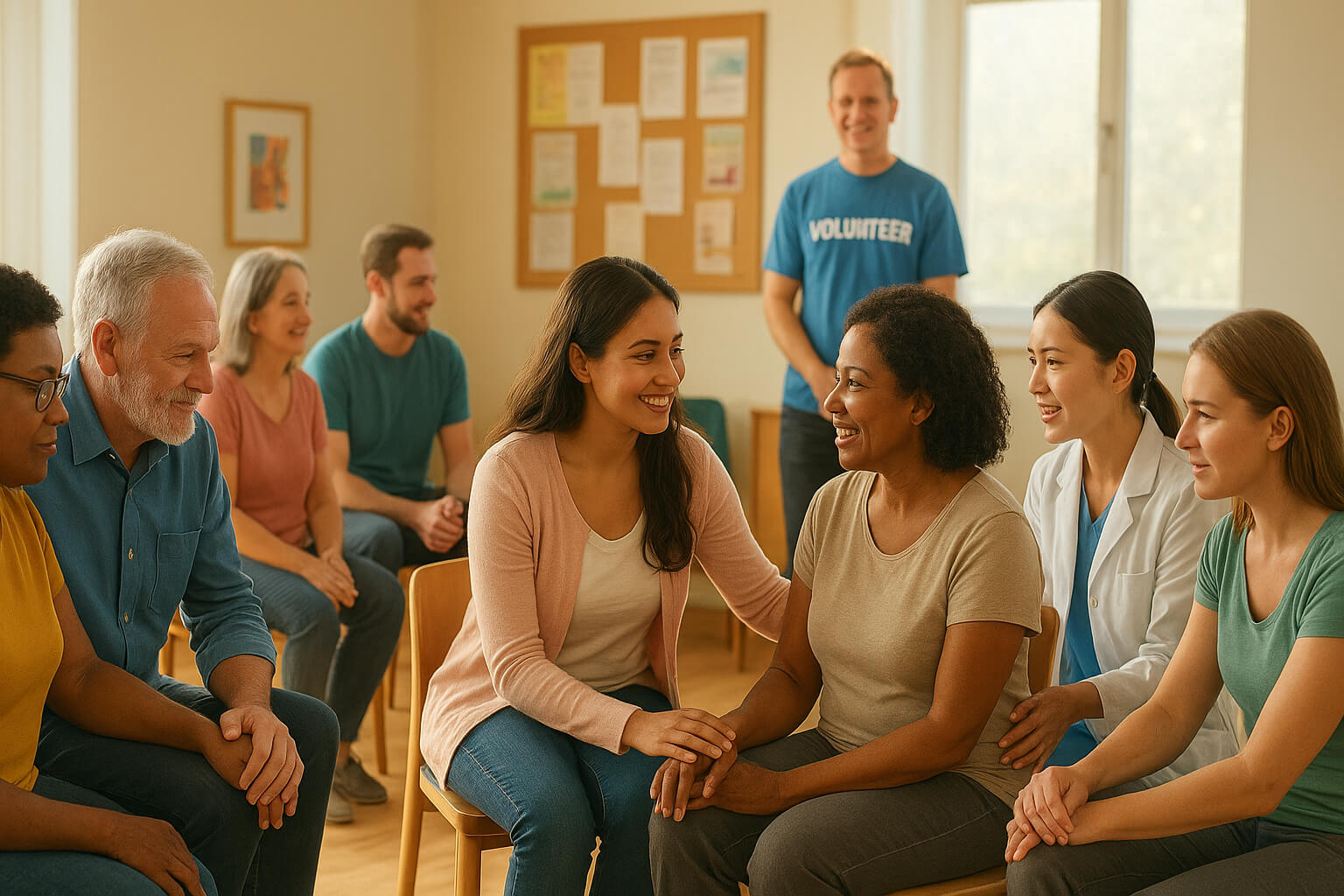August 22, 2025

When individuals face illness, trauma, or emotional hardship, recovery is never a solo journey. While medicine plays a critical role, community often becomes the true catalyst for healing—providing not only practical help, but also emotional encouragement, accountability, and belonging. Whether it’s a group of neighbors, an online support forum, or a team of peer mentors, communities can transform health recovery from a lonely challenge into a shared human experience.
Healing doesn’t happen in a vacuum. For patients with chronic illnesses, survivors of trauma, or individuals battling depression or anxiety, emotional connection is as vital as medication. According to the American Psychological Association, social support can reduce cortisol (stress hormone) levels, improve mental health outcomes, and increase resilience during recovery periods.
Local peer support groups—such as 12-step programs, cancer survivor circles, or postpartum support groups—offer a safe space to share stories, setbacks, and small victories. These interactions validate the lived experience and reduce the burden of stigma.
Insight: Studies show that simply hearing “you’re not alone” from someone who’s walked the same path can drastically improve a person’s recovery outlook.
This emotional healing is often mirrored in creative expression. As seen in RocketPages’ guide on how to learn guitar for free, music becomes both an emotional outlet and a social bridge—connecting people in recovery with creative goals, new friendships, and therapeutic practice.
Support from a community isn’t just emotional—it’s logistical, too.
Many patients face overwhelming practical barriers during recovery:
Community-based programs and volunteer networks fill these gaps. Faith groups, neighborhood task forces, and even informal WhatsApp groups often provide services like:
On a larger scale, initiatives like Community-Based Rehabilitation (CBR), promoted by the World Health Organization (WHO), empower local volunteers to deliver care, therapy, and support to individuals with disabilities or chronic illnesses (WHO – Community Health Workers).
Example: In India and parts of sub-Saharan Africa, CBR programs have increased recovery rates for stroke patients and reduced hospital readmissions by equipping families with in-home care knowledge.
Accountability and social connection can significantly improve adherence to treatment plans. Whether it’s a friend joining your physical therapy sessions or a peer mentor checking in after surgery, human connection often makes the difference between progress and stagnation.
Group activities—like walking clubs, dance therapy, or community gardening—not only promote mobility and physical healing, but also combat social isolation, especially among seniors and those living alone.
Insight: The social nature of healing mimics creative collaboration. In music communities, for instance, exchanging tools and feedback—as highlighted in Understanding Sample Packs—strengthens both the art and the artist. Likewise, recovery thrives in networks built on sharing and encouragement.
The rise of digital health platforms has made support more accessible for individuals in remote locations or those with mobility limitations.
Platforms like:
…have created virtual communities where users exchange health updates, seek advice, and share recovery tools—all in real time.
Similarly, digital creative platforms have also become therapeutic spaces. As explored in RocketPages’ blog on royalty-free music platforms, tech tools democratize access to healing activities such as journaling, composing music, or making art—fostering self-expression and mental relief.
Several successful global and local initiatives demonstrate how community models can accelerate recovery:
When health recovery becomes a shared effort, the impact ripples far beyond individual well-being:
The Harvard T.H. Chan School of Public Health reports that people with strong social networks are 50% more likely to survive major illnesses, have better heart health, and report higher life satisfaction (Harvard: Social Connections & Health).
Bottom line: Investing in community means investing in health—not only for individuals, but for economies, systems, and generations to come.
Here are ways individuals, businesses, and policymakers can foster community-driven recovery:
Health recovery is not simply about medicine—it’s about meaningful connection. Whether it's a meal from a neighbor, a shared story in a support circle, or a virtual message from someone who’s been there—community is often the most powerful medicine we have.
By uplifting each other, we build not just stronger individuals, but healthier, more resilient societies.
Stay up to date with the latest tips, expert insights, product reviews, and step-by-step guides to help you grow, create, and succeed—no matter your industry or passion.